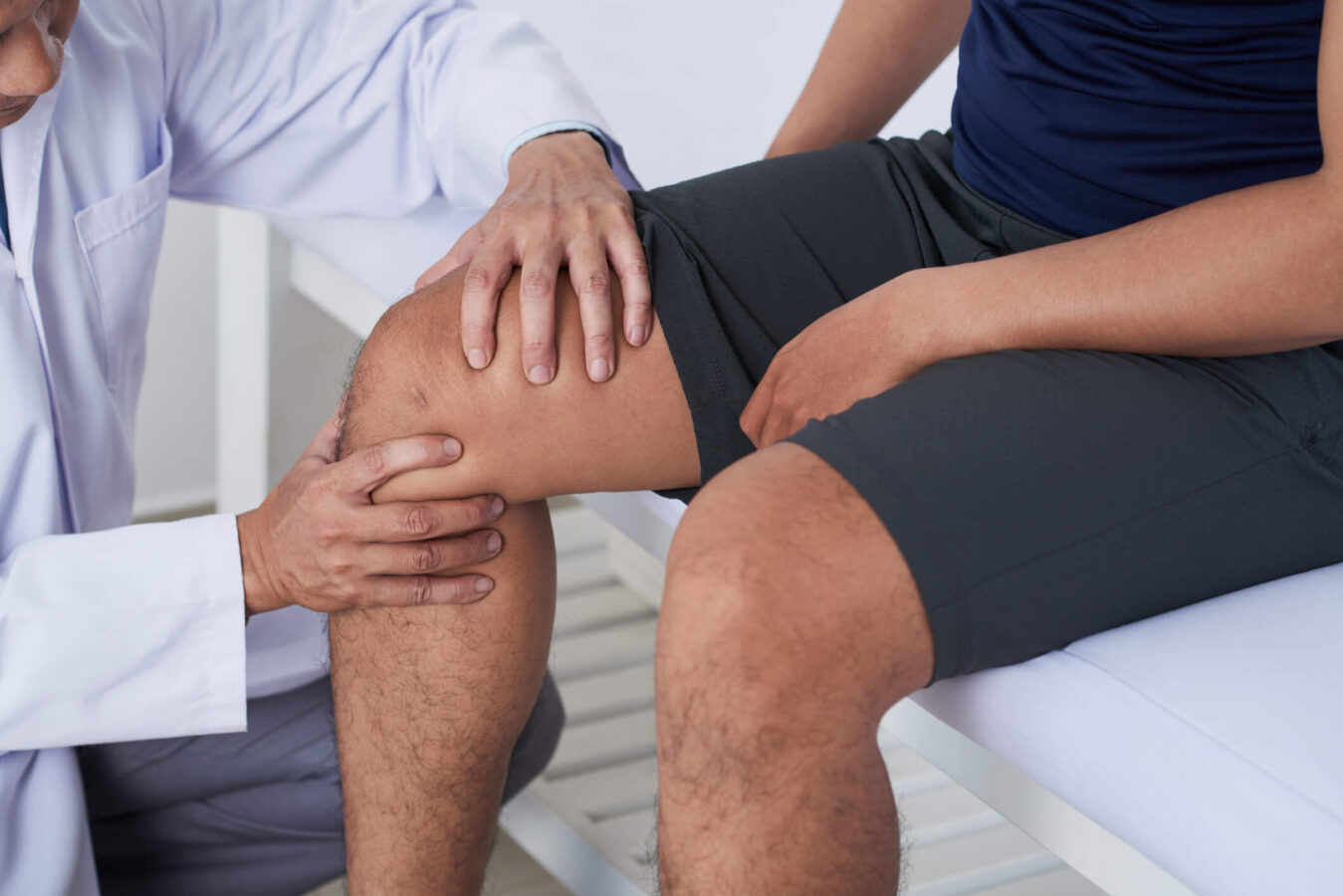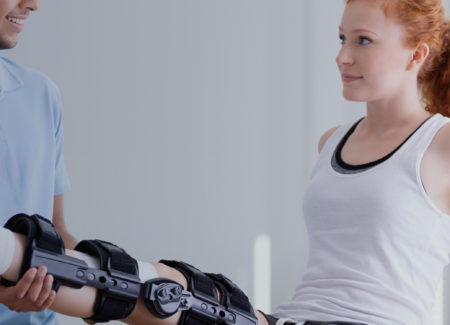
According to the National Library of Medicine, an estimated 1 in 3500 people in the United States will experience an anterior cruciate ligament (ACL) injury in their lifetime. They may be so common because they don’t require a direct hit to the knee to cause damage. You can tear your ACL with something as simple as an awkward landing. Sudden starts, stops, twists, and turns can also cause an ACL tear that requires nonsurgical or surgical treatment. Because of the motions involved with certain activities, people who ski, play basketball, soccer, volleyball, and football are more prone to ligament tears. More on how these injuries happen and what torn ACL recovery time can look like.
The primary structures that form the knees are bones, tendons, cartilage, meniscus, and ligaments. Ligaments are short bands of fibrous tissue holding organs in place and connecting bones.
The knee contains four major ligaments. The anterior cruciate ligament is located at the center of the front of the knee, connecting the thigh bone (femur) to the shin bone (tibia.) The ACL stops forward motion and the rotation of the shin bone on the thigh bone.
An ACL tear is damage to this ligament. The extent and severity of the injury classify ACL tears. As the name suggests, partial tears indicate incomplete damage. With a total ACL tear, the ligament is torn into two separate pieces.
ACL tears are also classified by grade:
For some people who tear their ACL, a popping sensation, or an audible “pop” is the first sign of trouble. This pop is usually followed severe knee pain and swelling. The knee may feel unstable and “give out” when standing or walking. If these symptoms occur, seek immediate medical help and avoid bearing weight on your knee if you suspect an ACL tear.
Your healthcare provider will ask you about your medical history and what you were doing when the injury happened. Along with a physical examination, they may order X-rays to rule out broken bones. If a ligament tear is suspected, an MRI is ordered to determine the location and extent of the damage.
An ACL tear cannot heal on its own. However, that does not mean you always need surgery. A lot depends on your lifestyle, pain level, and grade of injury.
For example, if you have a partial tear without pain or swelling and lead a relatively inactive lifestyle, you may decide to avoid surgery. Even with a complete tear, there are people who can often function normally even with a tear.
For active adults and young children involved in sports, who are more prone to injuries, surgery could be a viable option to consider. Also, if your knee tends to give out after an ACL tear, you have a higher risk of falling and suffering further injuries. That’s something to consider when weighing the pros and cons of surgery.
Non-surgical treatment for an ACL injury typically involves a combination of rest and elevation and compression of the injured joint. After a few days, you can begin physical therapy to improve knee function and restore strength. A knee brace can be worn throughout your torn ACL recovery for additional support.
The prognosis is good for a partial ACL tear without surgery. According to the American Academy of Orthopaedic Surgeons (ACOG), patients generally recover at around three months after the initial injury. (However, some knee joint instability may remain indefinitely.)
ACL reconstruction has become less invasive than past procedures. Today, surgeons repair ACL ligaments arthroscopically. In an arthroscopic procedure, tools are inserted through a small incision in the knee. Smaller incisions lower the risk of infection and minimize scarring.
During ACL surgery, the surgeon replaces the damaged ligament with tissue from another part of the body, or a tissue donor. In most cases, ACL repair is an outpatient procedure, and you can go home the same day.
Recovery from ACL surgery is understandably longer and more complex than it is for patients who do not have an ACL repair. After you are discharged from the hospital or surgical center to go home, you will need help caring for yourself.
For the first few days, you must elevate your leg 4-6 times per day on one or two pillows placed underneath your feet, always keeping your knee straight. This helps to reduce swelling. Keep the wound clean and dry.
At home, until you’ve recovered, you may need to use crutches and wear a supportive knee brace. The brace should remain in a locked setting to limit movement in the knee joint. It may take a bit of practice learning to walk up and down the steps and do other activities with a knee brace, but you will get the hang of it soon enough. Bracing is dependent on the surgeon and the repair.
While your provider may give you a few basic post-up knee exercises, intensive physical therapy usually starts within the first week after ACL surgery. Physical therapy after ACL surgery is intended to:
On average, patients resume sports and other activities between 6-12 months after surgery. No pain or swelling, full range of motion in the knee, and good muscle strength and endurance are all signs your recovery is going smoothly.
While we’ve provided a general idea of what you can expect from ACL surgery, everyone’s torn ACL recovery time looks different. Always follow the instructions from your surgeon, physical therapist, and other healthcare providers and contact them if you suspect a problem.
Keep in mind—you don’t have to wait for an injury to talk to your physical therapist about ACL injury prevention—especially if you play sports or do other high-risk activities. Injury prevention programs have been shown to significantly reduce the risk of ACL tears. Strong, stable, healthy knees require hip strength, core strength, and good balance and stability. Your physical therapist tailors stretches and exercises specifically to your needs to help you stay injury free—and stay in the game.
The good news is 90% of people return to pre-injury functioning after an ACL tear. Your physical therapist can help you reach the maximum recovery without surgery, and help you build strength and improve mobility and function in your knee before and after surgery if that’s your plan. Find a physical therapy clinic near you.
